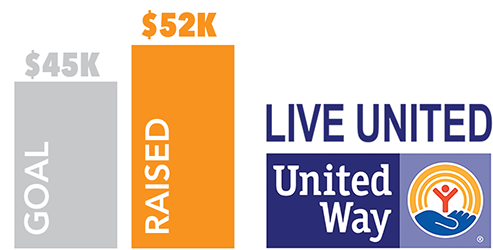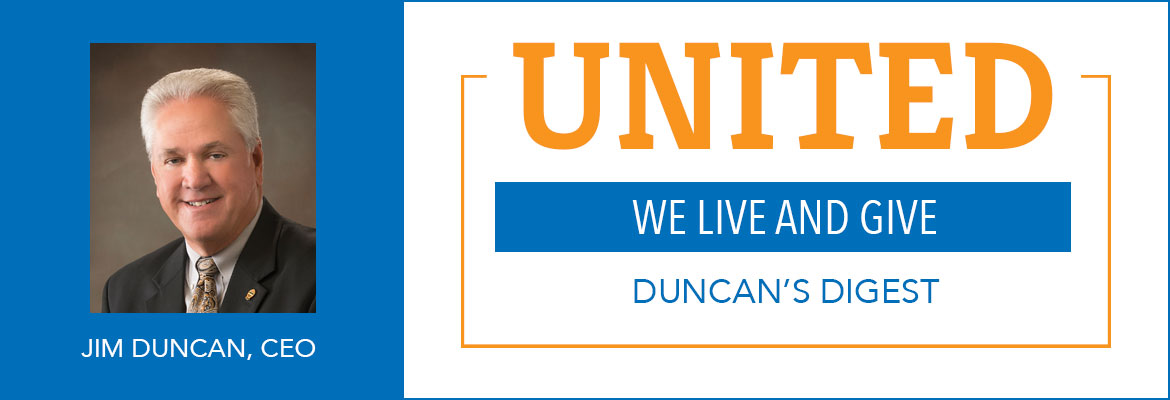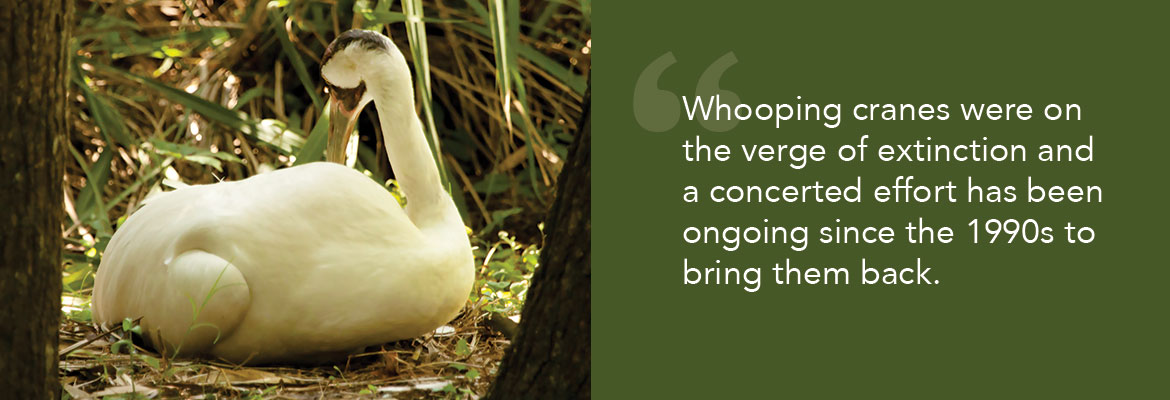SECO News, December 2017
Duncan’s Digest
United We Live & Give
It’s time to bid farewell to 2017 and welcome 2018 as the Christmas and New Year’s holidays approach. Dreaming of a white Christmas in Florida is probably a long-shot, but with the help of our charitable SECO employees, dreaming of a giving Christmas is a reality. SECO employees, myself included, renewed their commitment to local communities through their generous pledges to United Way in the new year.
SECO employees pledged $52,214 for United Way’s 2018 Live United campaign. Every dollar contributed by SECO employees is used to endow service programs that benefit the residents in the counties we serve and in our footprint. Much of the funding is locally designated by each employee to the agency of their choice and administered through United Way. Yearly, 61 million people across the world benefit from the programs and services funded by the United Way.
 Every penny makes a difference. Would you like your small change to make a difference in your community? Enroll in SECO’s Pennies from Heaven program and round up your monthly bill to the nearest dollar. Every penny collected through Pennies from Heaven is distributed locally to directly benefit SECO members. The donated funds may be used to purchase emergency medical supplies, support charitable organizations or provide bill payment assistance to your fellow members experiencing dire and unique circumstances. Enroll online or give us a call.
Every penny makes a difference. Would you like your small change to make a difference in your community? Enroll in SECO’s Pennies from Heaven program and round up your monthly bill to the nearest dollar. Every penny collected through Pennies from Heaven is distributed locally to directly benefit SECO members. The donated funds may be used to purchase emergency medical supplies, support charitable organizations or provide bill payment assistance to your fellow members experiencing dire and unique circumstances. Enroll online or give us a call.
To learn more about United Way, find a volunteer opportunity or to be connected with a local agency, visit www.UnitedWay.org.
I couldn’t be prouder of our employees’ goodwill toward others, and I am grateful to work with employees who care about our members and our communities. I applaud our employees’ generous spirit with their promise of $52,214 to support United Way’s 2018 campaign. This giving spirit reflects the very essence of our not-for-profit electric cooperative business model.
May peace, love and prosperity follow you all through the year. From our SECO family to yours, I wish you a Merry Christmas and all the best in the new year.
Jim Duncan
Chief Executive Officer
Toys for Tots — “SECO Claus Delivers”
In early November, it began to feel a lot like Christmas as hundreds of SECO employees performed the role of Santa Claus for SECO’s yearly toy drive. SECO chooses to support the U.S. Marine Corps Reserve Toys for Tots Program which collects new, unwrapped toys and distributes them as Christmas gifts to local children in need who live in the communities we serve.
The halls were decked, and Christmas joy and cheer were present at all SECO locations. Our perpetually generous employees donated hundreds of toys for needy children in Sumter, Lake, Marion and Citrus Counties. Each of our five Member Service Centers were open to the public as local Toys for Tots drop-off locations, and many charitable SECO members donated toys as well.
As a not-for-profit electric cooperative, SECO adheres to the seven key cooperative principles – one of which is Concern for Community. SECO employees personally demonstrate their Concern for Community by volunteering their time and supporting community involvement projects in their areas. Our employees give generously during the Christmas season to the Toys for Tots toy drive and the United Way as referenced on the front page.
Employees donned their Santa hats, and smiled for the camera while displaying the toys gathered across the cooperative. The toys collected through Toys for Tots will bring joy to thousands of local children who will wake up to presents under the tree on Christmas morning.
Merry Christmas!
Read the full December 2017 SECO News here.








